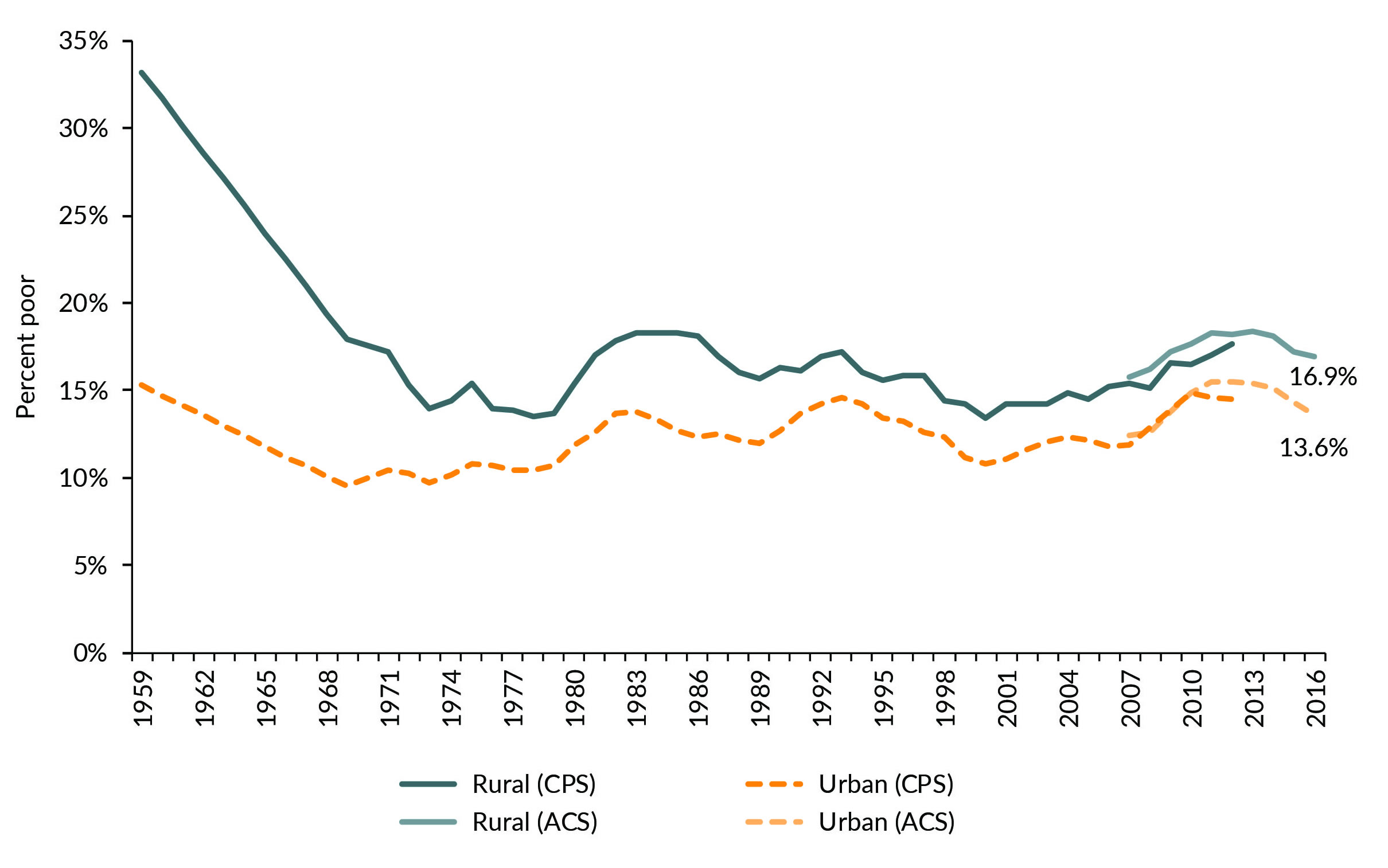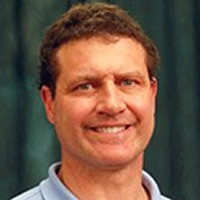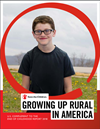
Feature
May | No. 4-2020

The economic fallout from the pandemic is not yet known, but many fear that it will be especially severe in rural America, where people were already struggling before the health crisis emerged.
For some rural areas, economic hardship has long been the norm. A commission on rural poverty convened by President Lyndon Johnson in 1967 released its findings in The People Left Behind report. They documented a rural poverty rate of 25%, almost double the urban poverty rate.
Half a century after the report’s release, IRP and the Rural Policy Research Institute held a conference to reexamine rural poverty. The research presented at the conference indicated that rural poverty declined sharply in the 1960s, but has remained fairly steady since the mid-1970s.
Recent estimates suggest the rural poverty rate is almost 17%, 3 percentage points higher than urban poverty. Further, persistently high-poverty counties are disproportionately rural and continue to be geographically concentrated in Appalachia and Native American lands, the Southern “Black Belt,” the Mississippi Delta, and the Rio Grande Valley.
Other rural trends discussed at the conference include:
- the rate of nonworking poverty, which has increased to surpass that of urban areas;
- rates of nonmarital childbearing, cohabitation, and single parenthood, all of which have rapidly increased since the 1960s; and
- real earnings of skilled rural men, which have not changed in 50 years.

Source: USDA Economic Research Service using data from the U.S. Census Bureau’s Current Population Survey (CPS) 1960–2013 and annual American Community Survey (ACS) estimates for 2007–2016.
Notes: “Urban” counties are those designated as “metro” in the CPS and ACS data; “rural” counties are those designated as “nonmetro” in the data. The metro/nonmetro status of some counties changed in 1984, 1994, 2004, and 2014. CPS poverty status is based on family income in the past 12 months, and ACS poverty status is based on family income in the prior calendar year.
Policy/Practice
“Are Rural Americans Still Behind?”

The economist James P. Ziliak, IRP Affiliate, notes:
“The problem with work requirements is they are based on the premise that work (or now full-time work) is readily available for those willing and able. However, it is a blunt policy instrument because the demand for labor is lacking in many rural communities, especially those most distant from urban centers. This suggests that a more robust economic policy that facilitates access to work, including direct place-based employment programs will be necessary.”
James P. Ziliak, “Economic Change and the Social Safety Net: Are Rural Americans Still Behind?” University of Kentucky Center for poverty Research Working Paper No. 2018-06, 2018.
Public Employment for Low-Skilled Workers

At the RUPRI conference, Ohio State University economist Mark Partridge called for public employment for low-skilled workers in need of employment, combined with more research on basic income strategies, since poverty is primarily an income issue.
Partridge praised the increasing attention to the importance of geography in poverty research and the recognition that local government and industry structure matter.
Robust Progress Against Child Poverty Unheralded

Brakkton Booker, National Public Radio, quoting Isaac Shapiro and Danilo Trisi:
“The robust progress against child poverty [between 1967 and 2016] is largely an unheralded development. So is the role of government programs in driving this progress.”
Brakkton Booker, “Rural Poverty in America is ‘an Emergency,’” National News, National Public Radio
Growing Up Rural in America
 “It is imperative for elected officials to create space for rural voices to inform policy decisions. We must work together to find and tailor innovative approaches for rural contexts and engage both public and private partners to replicate and scale solutions that work.”
“It is imperative for elected officials to create space for rural voices to inform policy decisions. We must work together to find and tailor innovative approaches for rural contexts and engage both public and private partners to replicate and scale solutions that work.”
Growing up Rural in America, Save the Children
[/three_fifth] [two_fifth_last padding=”0 0 0 25px”]The New York Times, April 8, 2020